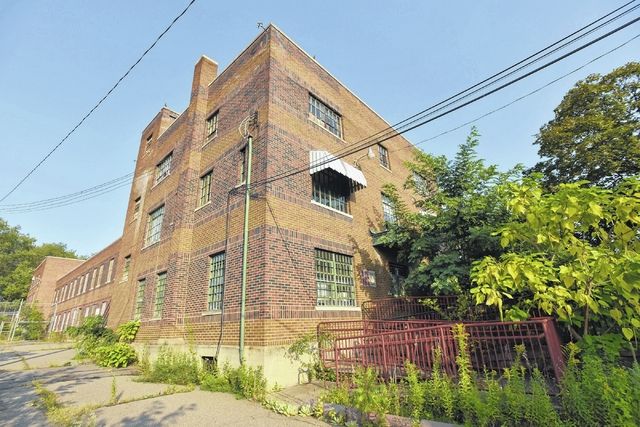Click here to subscribe today or Login.
Luzerne County’s prison overseer said rocks and balls – some packed with narcotics or tobacco – are periodically thrown into the prison yard from the old juvenile detention center property towering nearby, prompting him to propose several security measures if the center site is sold.
County Correctional Services Division Head Mark Rockovich outlined his concerns in a memo up for discussion at Tuesday’s county council meeting. County Councilman Eugene Kelleher had requested the input, saying he has reservations about a proposed sale due to reports he’s received about rocks being thrown.
Local businessman Jim Casey submitted the lone offer to buy the three-story structure overlooking the county prison on Water Street in Wilkes-Barre for $20,000 to open a new, long-term residential program for women recovering from drug and alcohol addiction.
County officials sought purchase offers to avoid spending an estimated $400,000 to tear down the vacant and unused structure. However, a council majority failed to act on Casey’s proposal at two recent meetings, with some members citing concerns about security and the feasibility of Casey’s proposed project.
Rockovich said there were a few instances in which rocks were thrown into the prison recreation yard while the juvenile center operated and since its closure in 2002.
“Some of the rocks were thrown in an attempt to injure officers or inmates and others were actually contraband colored and shaped to appear as rocks,” Rockovich wrote.
Inmates picked up the fake rocks and smuggled them into their blocks, he said.
Other contraband-stuffed items thrown over the prison yard fence include handballs, tennis balls and Nerf balls, he said.
“On one occasion, an arrow was shot from the vantage point of the hillside, and the arrow did land in the recreation yard,” Rockovich said. Officials did not determine if the arrow was an attempt to injure someone or transport contraband.
When the juvenile facility operated, prison staffers asked detention center staffers several times to investigate if people on the center grounds had a legitimate reason to be there, he said.
Another anticipated security concern is “sky writing,” a common inmate communication technique using hand movements in the air, Rockovich said.
Inmates in the recreation yard could use sky writing to send messages about coordinating contraband deliveries or other matters to residents living in the detention property, he said.
Rockovich recommended the county require the new owner to:
• Erect a fence at least 10 feet high along the hilltop.
• Install security cameras that are monitored, always recording and capable of storing at least three weeks of video.
• Provide 24-hour supervision of the center property and grounds.
The county also should retain ownership of the hillside between the prison and center or require the new owner to remove all shrubs and undergrowth from the hillside to allow for easy detection of security threats, Rockovich said.
The property must be subdivided at the buyer’s expense because the prison and detention center are on the same deed.
Casey, who operates the state-licensed, 50-bed James A. Casey House for recovering male addicts next to the federal courthouse on South Main Street, said his proposed program for women already includes round-the-clock, on-site supervision and security measures, including cameras.
He does not want the hillside, which has a steep drop, noting he would be taking over another steep hill on the River Street side that has been poorly maintained and become an eyesore. He said he would not object if the county wants to install a fence but does not know if he’d consider one.
Casey said he is a local resident trying to help women stay sober, take a blighted property off the county’s hands and put it on the tax rolls with no breaks.
“Who knows who is on that abandoned property now?” Casey said. “I want to be a good neighbor. They haven’t been a good neighbor to themselves.”
Contacted Monday, Rockovich stressed prison officials contact law enforcement if anyone is spotted on the juvenile center property because nobody is supposed to be there. If the property is occupied, prison officials must step up security to determine if someone standing on the grounds is a threat, he said.
In response to council questions about the need for a residential female recovery center, county Manager C. David Pedri submitted a memo from county Human Services Division Head Michael Donahue.
Northeastern Pennsylvania has “very limited” long-term residential programming for women with or without children, Donahue wrote. The closest program similar to the one planned by Casey is in Ashland, about 50 miles south of Wilkes-Barre, he said.
Donahue said he offers “full support” for the development of programs that will help women and their children “reunite and live sober and productive lives.”
Women in the proposed program would live there up to six months, Casey said, noting hundreds of men have stayed clean through his existing program.
He estimates $500,000 to $1 million in renovations are needed and has secured a line of credit in that amount. Casey also is a licensed contractor and plans to perform many renovations himself.
Casey said he will honor his purchase offer through the end of this month, leaving Tuesday’s meeting as the last chance for council members to act.





